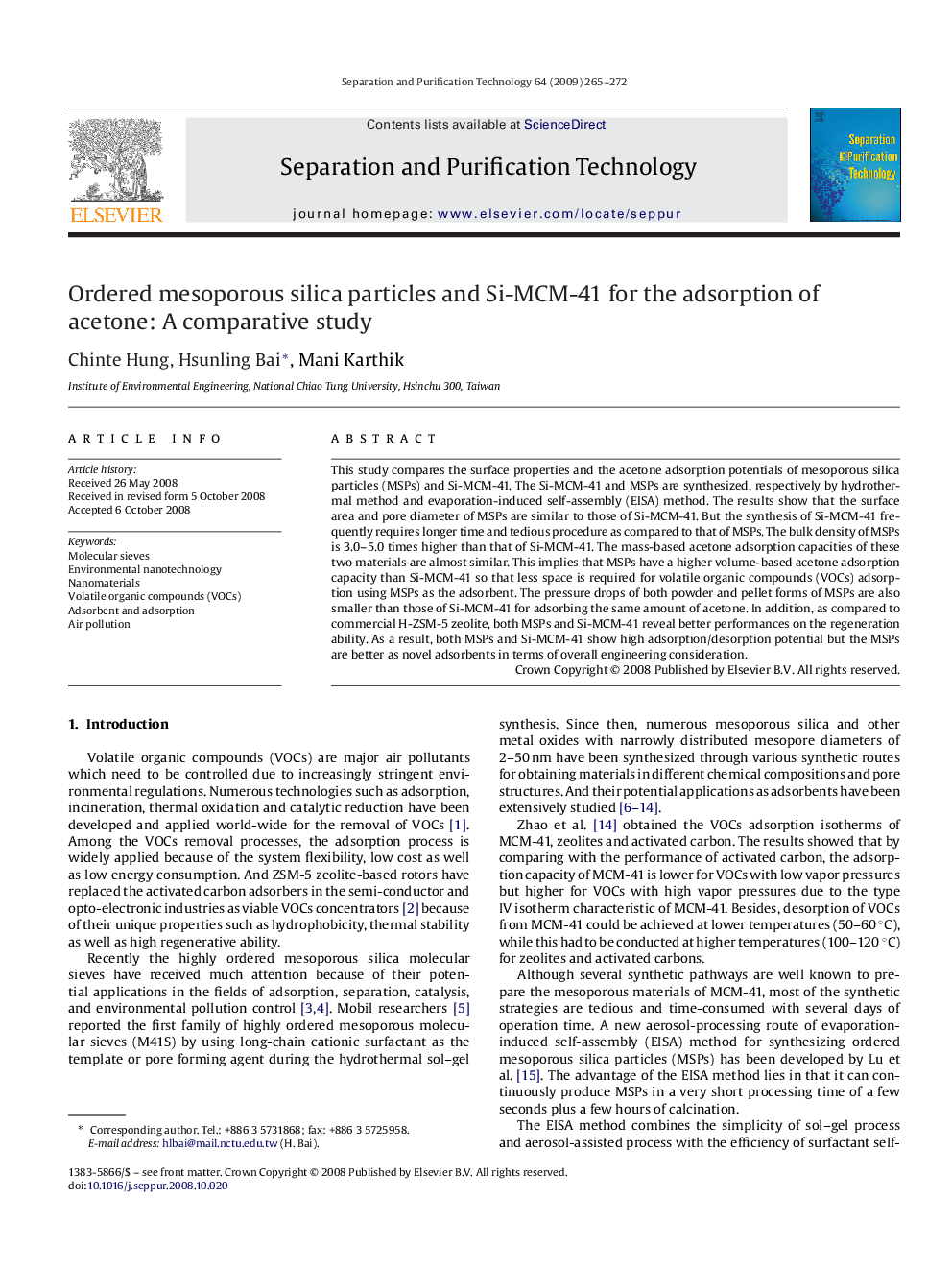| Article ID | Journal | Published Year | Pages | File Type |
|---|---|---|---|---|
| 643633 | Separation and Purification Technology | 2009 | 8 Pages |
This study compares the surface properties and the acetone adsorption potentials of mesoporous silica particles (MSPs) and Si-MCM-41. The Si-MCM-41 and MSPs are synthesized, respectively by hydrothermal method and evaporation-induced self-assembly (EISA) method. The results show that the surface area and pore diameter of MSPs are similar to those of Si-MCM-41. But the synthesis of Si-MCM-41 frequently requires longer time and tedious procedure as compared to that of MSPs. The bulk density of MSPs is 3.0–5.0 times higher than that of Si-MCM-41. The mass-based acetone adsorption capacities of these two materials are almost similar. This implies that MSPs have a higher volume-based acetone adsorption capacity than Si-MCM-41 so that less space is required for volatile organic compounds (VOCs) adsorption using MSPs as the adsorbent. The pressure drops of both powder and pellet forms of MSPs are also smaller than those of Si-MCM-41 for adsorbing the same amount of acetone. In addition, as compared to commercial H-ZSM-5 zeolite, both MSPs and Si-MCM-41 reveal better performances on the regeneration ability. As a result, both MSPs and Si-MCM-41 show high adsorption/desorption potential but the MSPs are better as novel adsorbents in terms of overall engineering consideration.
